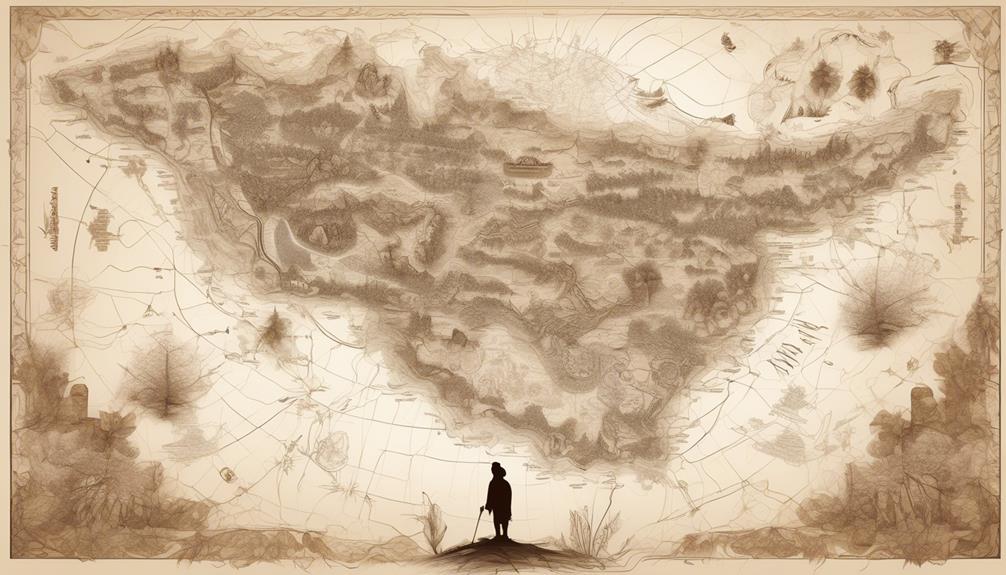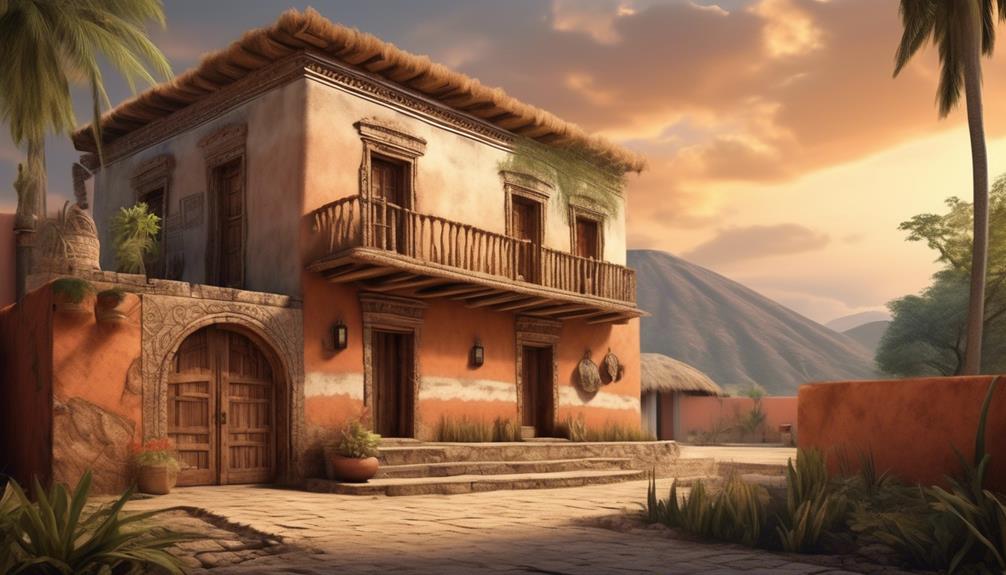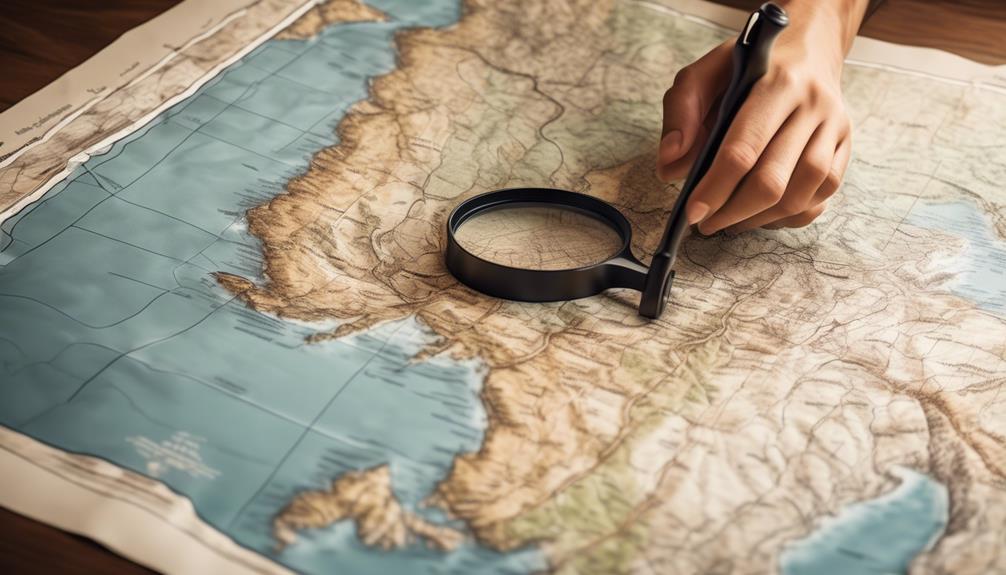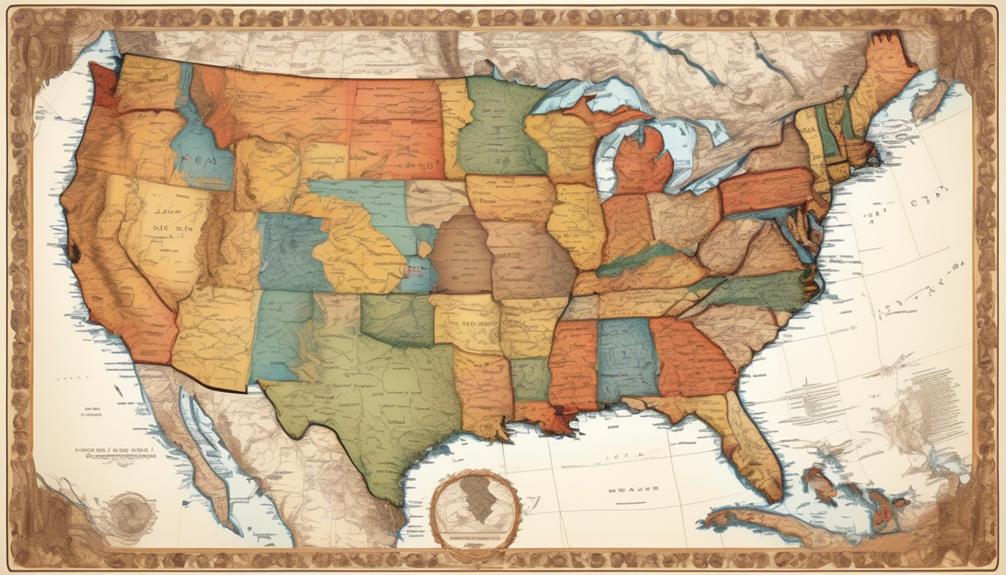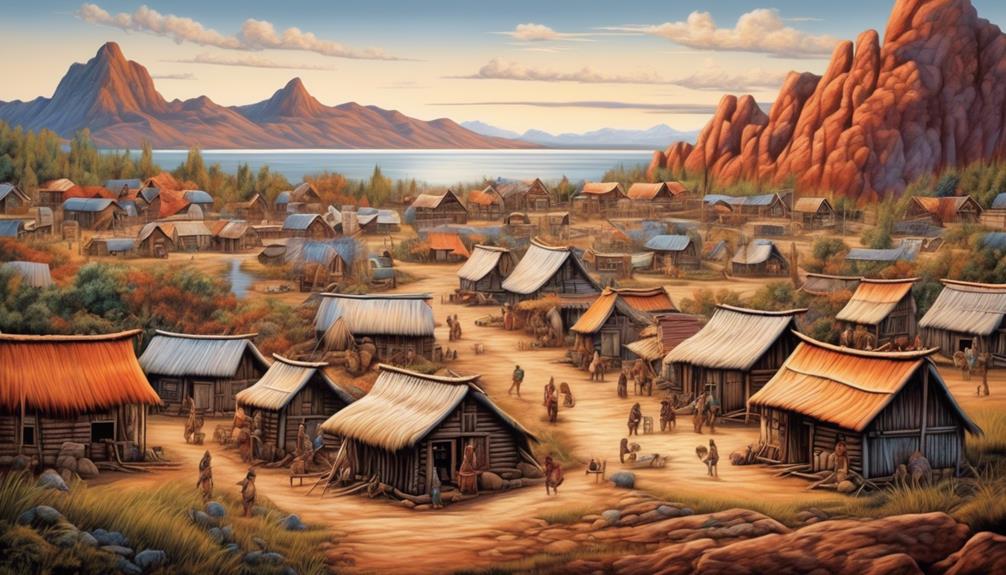We often go about our daily routines without considering the deep history and connections to the land on which we live. Acknowledging the Indigenous lands where we live and work is essential for creating a respectful and inclusive environment.
Have you ever wondered whose traditional land you currently reside on? The answer may surprise you and lead to a greater appreciation for the rich cultural heritage of the area.
Key Takeaways
- Indigenous territories hold deep cultural, spiritual, and economic significance beyond just ownership.
- Traditional land acknowledgments recognize ancestral connections, treaty rights, and stewardship.
- Online Indigenous land tools provide valuable resources and information for understanding traditional territories.
- Consulting with local Indigenous communities and incorporating their perspectives is essential for respectful recognition of Indigenous lands.
Understanding Indigenous Territories
Understanding Indigenous Territories begins with acknowledging the rich and complex relationships that Indigenous peoples have with the land. Sovereignty lies at the heart of these relationships, as Indigenous communities have historically maintained governance over their territories. This sovereignty extends beyond mere ownership; it encompasses the cultural, spiritual, and economic significance of the land.
It's essential to recognize that Indigenous territories aren't just physical spaces but are deeply intertwined with the cultural identity and heritage of the people.
Cultural preservation is intricately connected to the concept of Indigenous territories. The land serves as a repository of traditions, knowledge, and rituals that have been passed down through generations. The preservation of Indigenous territories is therefore vital for safeguarding not only the physical environment but also the intangible cultural heritage that's embedded within it.
Researching Traditional Land Acknowledgments
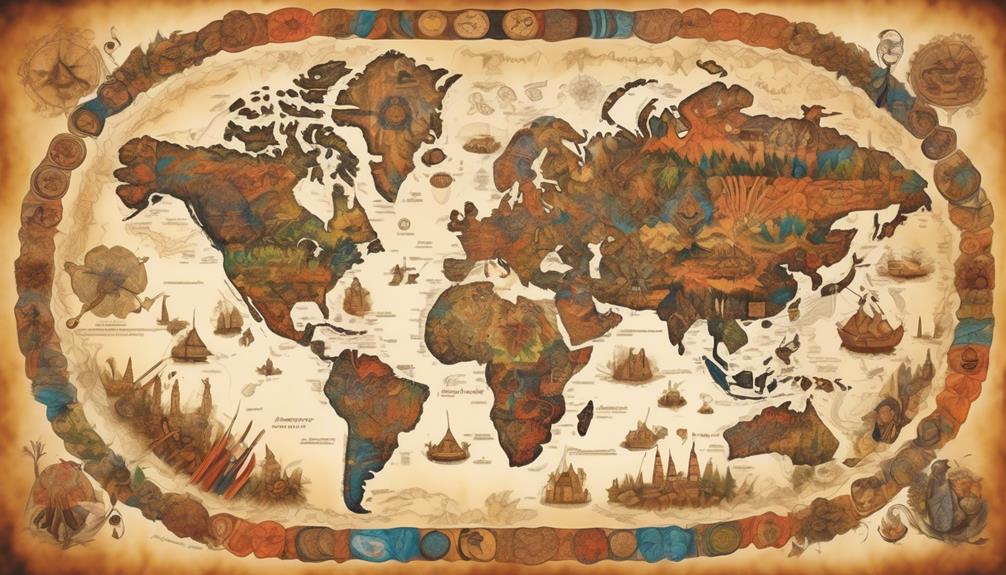
We have embarked on a journey to explore the significance and practice of traditional land acknowledgments within Indigenous communities. Researching traditional land acknowledgments involves delving into the cultural significance and historical land treaties that shape the relationships between Indigenous peoples and the land they inhabit. Understanding the depth of this practice requires a respectful and attentive approach to the historical and ongoing connections that Indigenous peoples have with their traditional territories.
| Cultural Significance | Historical Land Treaties | Indigenous Relationships |
|---|---|---|
| Acknowledging ancestral connections to the land | Recognition of treaty rights and obligations | Honoring stewardship and reciprocity |
Exploring the cultural significance of traditional land acknowledgments reveals the deep-rooted respect for the land and its historical, spiritual, and cultural importance to Indigenous communities. Moreover, delving into historical land treaties sheds light on the legal and moral obligations that underpin the relationships between Indigenous peoples and the territories they have inhabited for generations. By understanding these complexities, we can authentically acknowledge and honor the Indigenous peoples as the traditional stewards of the land.
Utilizing Online Indigenous Land Tools
Utilizing online Indigenous land tools allows us to access valuable resources and information for understanding and acknowledging the traditional territories of Indigenous peoples.
Exploring interactive maps provides a visual representation of tribal boundaries and territories, offering insight into the historical and contemporary landscape of Indigenous land. These maps often include layers of information, such as language groups, treaty territories, and historical sites, providing a comprehensive view of Indigenous history and cultural preservation efforts.
Additionally, online tools offer guidance for crafting territorial acknowledgments, fostering respectful relationships with Indigenous communities and promoting land recognition.
Consulting With Local Indigenous Communities
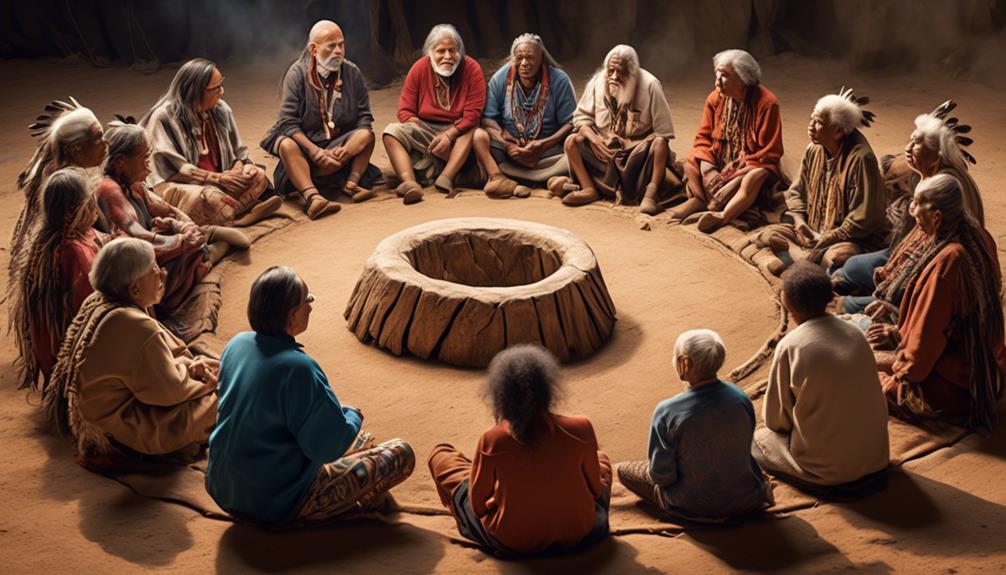
As we engage in our exploration of Indigenous land, it becomes essential to establish meaningful connections and partnerships by respectfully consulting with local Indigenous communities. Building relationships with local Indigenous communities is fundamental to understanding the significance of the land and its cultural heritage.
Consulting protocols should be followed with cultural sensitivity and a deep appreciation for the traditions and knowledge held by Indigenous peoples. Community engagement should be approached with humility and a willingness to listen and learn from the perspectives of the local Indigenous communities.
When consulting with local Indigenous communities, it's crucial to recognize and respect their inherent rights and authority over their land. This involves engaging in open and honest dialogue, acknowledging historical injustices, and committing to meaningful partnerships based on mutual respect and understanding.
It's important to approach these consultations with a genuine willingness to incorporate the insights and perspectives of Indigenous communities into decision-making processes that may impact their land and resources.
Practicing Respectful Recognition of Indigenous Lands
Understanding the historical and cultural significance of Indigenous lands is essential in fostering respectful recognition and honoring the heritage embedded within them. It's crucial to approach the practice of land acknowledgment with cultural sensitivity and a deep understanding of the Indigenous peoples' connection to the land. Here are three key points to consider when practicing respectful recognition of Indigenous lands:
- Educate Yourself: Take the time to learn about the Indigenous peoples who originally inhabited the land you're on. Understand their history, traditions, and current presence in the area. Knowledge is the foundation of respectful recognition.
- Engage in Meaningful Dialogue: Reach out to local Indigenous communities and engage in open, respectful dialogue. Ask how you can best acknowledge the traditional caretakers of the land and honor their ongoing relationship with it.
- Participate in Indigenous-Led Initiatives: Support and participate in events and initiatives led by Indigenous communities. This could include attending cultural events, volunteering with Indigenous organizations, or contributing to land conservation efforts.
Frequently Asked Questions
How Can I Get Involved in Local Indigenous Community Events and Initiatives to Show My Support and Respect for Their Land?
We can show support for indigenous communities by participating in local partnerships, cultural events, and indigenous workshops.
Engaging in land acknowledgment practices is also important. We should seek out opportunities to learn about the history and culture of the indigenous people on whose land we reside.
It's crucial to approach these initiatives with respect, sensitivity, and a genuine desire to support and honor indigenous communities.
Are There Specific Protocols or Customs I Should Follow When Visiting or Hiking on Indigenous Land?
When visiting or hiking on indigenous land, it's important to show cultural sensitivity and etiquette. Begin by researching the specific protocols and customs of the indigenous community you're visiting.
Prioritize land acknowledgment and support conservation efforts. Always seek permission before engaging in any activities on the land and respect any sacred sites or areas.
What Resources Are Available for Learning About the History and Culture of the Indigenous People Who Traditionally Inhabited the Land I Currently Live On?
When it comes to learning about the history and culture of the indigenous people who traditionally inhabited the land we currently live on, there are some great resources available.
Engaging in indigenous history education and cultural awareness outreach can be eye-opening. Did you know that over 570 indigenous tribes exist in the United States alone?
It's important to seek out reliable sources, connect with local indigenous communities, and participate in educational events to gain a deeper understanding.
How Can I Support Indigenous Land Rights and Advocacy Efforts in My Area?
Supporting advocacy for Indigenous land initiatives involves several key components.
Firstly, it is important to involve the local community in these initiatives. This can be done by reaching out to local Indigenous organizations and finding ways to collaborate and support their work. By working together, we can ensure that the voices and needs of Indigenous communities are heard and addressed.
Secondly, respecting land visitation etiquette is crucial. This means being mindful of the cultural significance of certain areas and obtaining permission before accessing them. By showing respect and understanding for Indigenous land, we can contribute to the preservation and protection of these important sites.
Additionally, promoting cultural education and preservation efforts is essential. This can be done through attending events, workshops, and other educational opportunities that focus on Indigenous culture and history. By actively participating in these activities, we can gain a deeper understanding of Indigenous land rights and the ongoing struggles faced by Indigenous communities.
Lastly, it is important to actively advocate for Indigenous land rights and raise awareness about these issues. This can be done by using our platforms to amplify the voices of Indigenous communities, sharing information and resources, and engaging in conversations about the importance of Indigenous land initiatives. By taking an active role in advocacy efforts, we can contribute to the preservation and recognition of Indigenous land rights in our area.
What Are Some Ways I Can Contribute to the Preservation and Protection of Indigenous Land and Resources?
We can support indigenous land rights and advocacy efforts in our area by:
- Supporting organizations dedicated to environmental stewardship.
- Contributing to indigenous education initiatives.
- Practicing land acknowledgment.
These actions help preserve and protect indigenous land and resources, fostering a more inclusive and sustainable future.
It's crucial to approach these efforts with respect, knowledge, and cultural sensitivity. Ensuring that our contributions align with the needs and aspirations of indigenous communities.
Conclusion
As we continue to learn and grow, let's remember that understanding Indigenous territories is like peeling back the layers of a rich and diverse tapestry.
Let's strive to honor and acknowledge the ancestral lands we occupy, like tending to the roots of a great old tree, with care and reverence.
Together, let's embrace the responsibility of recognizing and respecting Indigenous lands as a crucial step towards healing and unity.
Mary is a passionate writer who brings creativity and a fresh perspective to our team. Her words have the power to captivate and inspire, making her an essential contributor to our content. Mary’s commitment to storytelling and dedication to promoting Indigenous culture ensures that her work touches the hearts of our readers. We’re fortunate to have her as part of our team.
